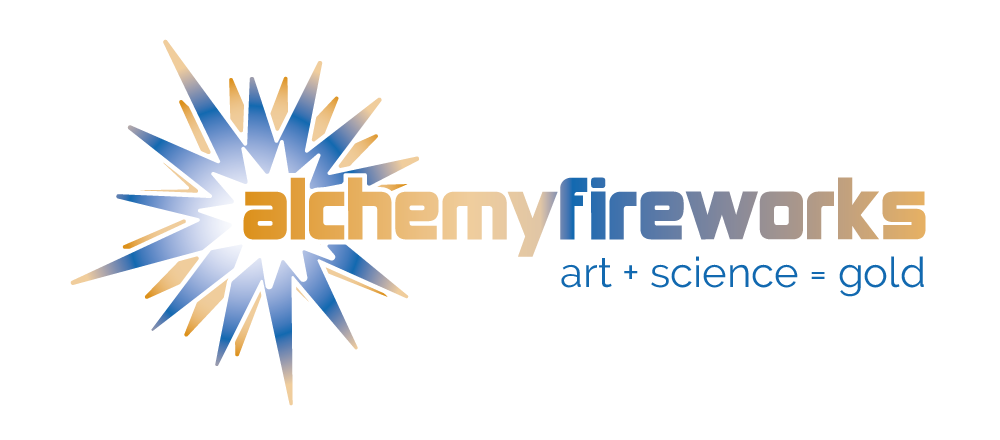The Chemistry of How Fireworks Get Their Colour
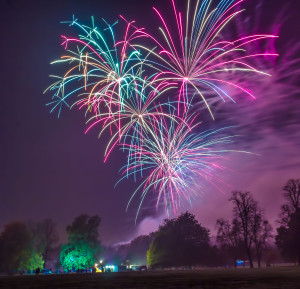
A traditional part of celebrations around the world, very few things beat an innovative and magnificent fireworks display. Creating fireworks with distinct and bright colours needed for an impressive display relies on precise chemistry and a great application of scientific principles. The points of light projected from fireworks, often known as stars; usually require fuel, a binder to keep everything in the correct place and an oxygen-producer, along with the colour producer to determine the look of the firework.
There are two main ways to produce colour in fireworks, luminescence and incandescence.
Luminescence
Luminescence is light produced through energy sources other than heat, and is sometimes known as ‘cold light’. This is due to luminescence’s ability to occur at room temperature or even cooler temperatures.
Luminescence is produced through energy being absorbed by an electron of a molecule or atom, causing it to be unstable and excited. This energy is released when the electron returns to a lower energy state, releasing in the form of a photon, or light. It’s this photon that determines the colour or wavelength of a firework.
The salts used in the production of luminescent fireworks can be unstable. For example, barium chloride, used in the production of green fireworks, is unstable at room temperature and must be combined with more stable compounds such as chlorinated rubber.
Copper chloride, responsible for blue fireworks, is unstable at higher temperatures, meaning that a blue firework cannot get too hot, despite needing to be bright enough to be seen.
Incandescence
Incandescence refers to light produced from heat. It works by causing a substance to become hot and eventually glow. Initially emitting infra-red light, incandescence soon emits red, orange, yellow and ultimately white light as the temperature increases.
By controlling the temperature of a firework, it’s possible to manipulate the glow of the components to produce the desired colour at the right time. Various metals are useful for creating brightly burning fireworks as they increase the temperature of the firework, such as aluminium, magnesium and titanium.
The quality of firework colours
In order to produce pure colours, at Alchemy Fireworks, we use pure ingredients. Different colours can be overpowered or altered by trace amounts of sodium impurities, resulting in a yellow-orange colour.
We also carefully formulate our fireworks so that the colour of the firework isn’t masked by too much residue or smoke, ensuring a bright and colourful display.
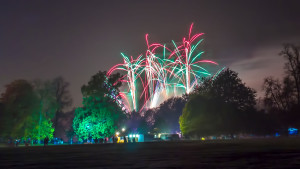
The elements used in creating firework colours:
Aluminium
A common component of sparklers, aluminium is used to produce white and silver sparks and flames.
Antimony
Antimony is often used to create glitter effects for fireworks.
Barium
Barium is involved in the production of green fireworks and can stabilise some other volatile elements involved in fireworks production.
Calcium
Calcium is regularly used to deepen a variety of different firework colours. Calcium salts are also used to create orange fireworks.
Copper
Copper compounds are often used due to their ability to produce blue colours in fireworks.
Lithium
Lithium is responsible for producing red colours in fireworks. One of the most common fireworks colourants is lithium carbonate.
Magnesium
Magnesium is used to improve the brilliance of a firework or to add white sparks, due to it burning a very bright white.
Phosphorous
As well as potentially being a component in the fuel of a firework, phosphorous burns instantly in the air and is used for some glow-in-the-dark effects.
Sodium
Sodium is used for giving a bright gold or yellow colour to fireworks; however the brightness of the burn can easily overshadow other colours.
Strontium
Like lithium, strontium is used to produce red colours in fireworks. It’s also important in stabilising a variety of more volatile firework mixtures.
Titanium
Burnt as either powder or flakes, titanium metal is used to produce silver sparks.
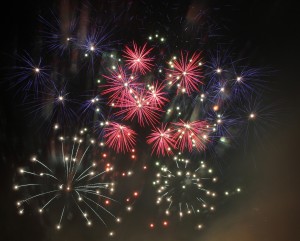
Why not try creating different coloured flames yourself?
If you want to experience how different chemicals react to heat and create different colours, you can easily make a small campfire and sprinkle chemicals over it.
Not only can you buy specially produced packets of chemicals for colouring flames, you can quite easily make them yourself. If you’re going to cook food on your fire, it’s advisable to do this before you add the chemicals to reduce the risk of contamination. The following chemicals aren’t very toxic, producing no dangerous smoke or harm to the surrounding area.
For white flames, use magnesium sulphate, commonly found in Epsom salt. Yellow flames can be produced from sodium chloride, also known as table salt. If you want to create green flames, use borax- a common ingredient in cockroach powder or the disinfectant, boric acid powder. You can also create green flames through using copper sulphate, or algae treatment.
Copper chloride can be used to create blue flames, and purple flames can be produced through the use of potassium chloride or a salt substitute. If you’d prefer pink flames, lithium chloride or lithium from a battery will work.
Whilst fires tend to be red and orange in colour naturally, to create red flames, you can find strontium nitrate and strontium chloride in emergency road flares. Orange flames can be made incredibly easily using iron oxide, or rust.
A lot of these chemicals can be bought at a supermarket, and the ones you can’t find there are easily available online. You may wish to avoid using sodium chloride for yellow flame. Not only do flames appear yellow, the sodium chloride can easily overpower any other colours you’re trying to make.
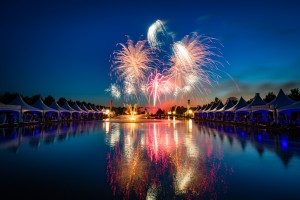
At Alchemy Fireworks, we regularly undertake fireworks displays to meet every budget, size, shape and brief. From corporate celebrations to large public Bonfire Night displays, the team at Alchemy Fireworks ensure that your event brings the fun and excitement you want, to your event.
If you’re not sure what you want from your fireworks display, our experienced and professional team are on hand to take you through our winning formula for designing a unique display to amaze and thrill your guests.
Call us now on +44 (0)8000 66 58 37 to discuss your firework display plan and see how we can make your dream a reality.
